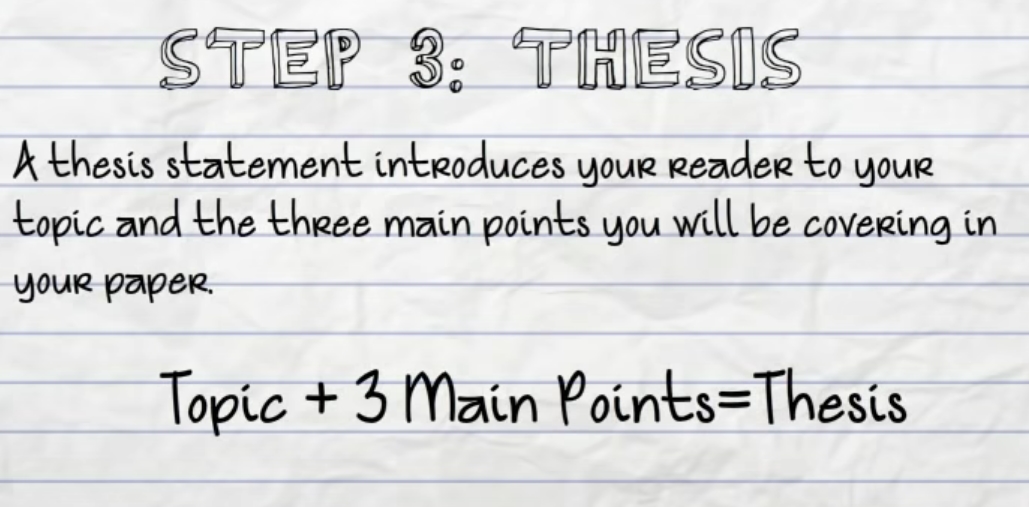
It is important to draw a parallel between the main points of the work. It is necessary to briefly and qualitatively reveal the essence of their interaction and show what the main difference between one sphere of control and another is.
A well-written introduction sets the tone for the entire work, attracts the audience’s attention and presents hypothesis or statements. The researcher should focus well on writing the introduction. 5homework.com offers the following easy steps that will significantly increase the chances of overestimating the final score!
Many researchers mistakenly believe that the introduction must be written immediately and completely. This is not true. Before to start working on the body paragraphs, it is necessary to write only a part of the introduction, namely: relevance, goals and objectives. Everything else is written after the completion of the work.
Writing an introduction to a student work may be the most difficult part of the paper. The intro declares the paper topic, substantiates its preconditions and relevance, and then sets out the issues discussed in the paper and the hypothesis put forward. The introduction must contain the following parts:
What should be in the introduction Paragraph?

The hook sentences are aimed to catch an eye of the target readers from the first line or few to make the audience read the paper from the beginning until ending or at least half of it. A hook sentence may be of different kinds:
- to start with
Here are some useful tips that will help everyone to write a powerful introduction, increase interest and engage the audience to know the rest of the paper:

Your introduction should also highlight potential results or explain research structure and organization.
As any book or movie, introduction aims to set the background and give your assignment a certain context, allowing the reader to see how your work complements previous researches on the similar topic.
This step may be obvious but it plays a crucial part in writing a great research paper. If you select an irrelevant, boring or too general topic, you risk losing motivation and dropping the assignment somewhere in the middle.
- What is it?
- Why should you read it?
- What do you want your reader to think about it/ react to?
What should be in the introduction of a research paper?

However, huge amounts of information can make it difficult to fit into several paragraphs, so be careful and provide only the most important information.
- A literary quote
Importance of a good introduction is impossible to overestimate, because you will never have another chance to make a positive first impression.
_1568118756-min_1614615284.jpg)
- Introduce your topic.
- Create some context and background.
- Tell your reader about the research you plan to carry out.
- State your rationale.
- Explain why your research is important.
- State your hypothesis.
Though introduction to any writing is frequently associated with beginning, it's not that simple for an introduction to a research paper. Here you can find a guide on how to write an introduction to a research paper, which presents a topic to the reader. While creating an introduction for a research paper students frequently get lost in the consistency of their thoughts. But following the structure and simple rules, you will succeed with your writing and get the desired mark..
As you see, writing research papers introduction is not that challenging if you follow the guide. But sometimes even the smartest students fail in choosing a competitive topic and building a solid thesis. Even if you consider your topic important, it can seem questionable for your professor. How to write an introduction for a research paper and make it flawless?
How do you write an introduction for a research paper?
Writing an Introduction to a Research Paper – What to Include

When all the important work is done, it’s time for the outline of the research paper’s structure. Not every mentor requires the structure overview in the introduction, but sometimes students are asked to stress on few aspects of their future research. This is not about the detailed depiction of every part of your work. The outline is a short paragraph, which consists of 3 or 4 sentences and represents your plan for the entire paper. You can also look for some essay introduction examples to grab some ideas.
Developing a statement in the main body, you will need some literature sources to refer to. While your idea can sound a bit subjectively, if you maintain it with citations extracted from works of famous scientists, authors, or philosophers, you will prove your point. Don’t neglect modern time scholars that are being deeply concerned about the issue or opinion you stated. The introduction should briefly state what the literature will be about.
The introduction of writing is going to set out your rationale, which is what research will be based around. Your readers should be able to tell what they are reading right from the beginning and whether it interests them.
:max_bytes(150000):strip_icc()/GettyImages-586158036-5aafc8f943a1030036589fad.jpg)
A simple note detailing the author's name, journal, and date of publication can help you keep track of sources and avoid plagiarism.
Emily is a fact checker, editor, and writer who has expertise in psychology content.
It is important to give the reader a good overview of the historical context of the issue you are writing about, but do not feel like you have to provide an exhaustive review of the subject. Focus on hitting the main points, and try to include the most relevant studies. You might describe the findings of previous research and then explain how the current study differs or expands upon earlier research.
Once you have summarized the previous research, explain areas where the research is lacking or potentially flawed. What is missing from previous studies on your topic? What research questions have yet to be answered? Your hypothesis should lead to these questions.
Create a Detailed Outline
If your paper tackles a controversial subject and is focused on resolving the issue, it is important to summarize both sides of the controversy in a fair and impartial way. Consider how your paper fits in with the relevant research on the topic.
Once you are ready to write your introduction, your first task is to provide a brief description of the research question. What is the experiment or study attempting to demonstrate? What phenomena are you studying? Provide a brief history of your topic and explain how it relates to your current research.
The purpose of an introduction in a psychology paper is to justify the reasons for writing about your topic. Your goal in this section is to introduce the topic to the reader, provide an overview of previous research on the topic, and identify your own hypothesis.

The general outline for research paper consists of the following:
Example: Here’s how the general outline would look if were writing about Shakespeare:
Whenever having to write a research introduction, keep in mind the diagram you see below.
Research papers usually discuss serious topic or ideas, or the ones that are subjected to numerous debates. A writer i.e. you, has to a thorough research, find out as much as possible and combine previous and current research data on the topic. The paper should, also, include conflicting ideas or attitudes.
Bottom line

The research paper does not deal with writer’s opinion, it is not your job to write what you think about the subject and support your claim with evidence. Instead, it deals with facts! If you don’t have any desire to do research on an uninteresting topic, so pay to have research paper written by experts of trustworty writing service.
- Although introductions of research papers can be somewhat longer than in regular essays, you should still try to keep it short. Don’t drag the introduction and take up half of a page or something. Rambling, lengthy introductions will quickly lose your reader’s interest. Plus, they are a sign of an unorganized thought
- Introduction isn’t a summarized version of the entire paper, it briefly introduces your work
- Never choose a thesis statement you can’t support with evidence
- Based on your research, include points or subtopics that you will delve into in the body of the paper
- Subtopics should be associated with the main subject and work to strengthen the importance and value of your thesis statement
- When writing the first draft, you can save the introduction for last (if you find it easier that way). By the time you finish the body and conclusion, you’ll get inspired and know what to include in the introductory part of your paper.
- Take a notebook and write down different ideas to make an interesting, yet professional introduction. Separate good ideas from the bad ones, think of your research question and thesis statement. Now, connect those ideas with sentences
- Be precise, your introductions should be precise and specific and discuss only the idea you’ve researched and plan to elaborate further, don’t stray away from the topic and write about stuff that you won’t even mention in the body.
The purpose of a research paper outline is to help you think through your topic carefully and organize it logically before the writing process commences. Since I’ve already shown how to write the introduction, it’s time to give a few pointers for the body and conclusion of your work. So, here we go:
To simplify, use the following diagram when you have to work on a research paper.

An academic paper introduction without its conclusive element, a thesis statement, cannot exist. The student should not perform it in the end. A thesis statement is the first thing that must be composed when making the outline. Based on it, an author will choose primary and secondary sources to support the relevant proof with strong evidence. The whole paper stands on the thesis. This statement supplies the success rate of the entire work. The thesis provides:
- A title
- A hook statement
- Background data
- Thesis sentences
Individual research stimulates problem-solving activities. In order to do research work, the student should use knowledge from various scientific fields. Performing experiments allows combining practical actions with academic knowledge. In the course of such activities, each person has the opportunity to realize own capabilities, use the experience and knowledge, and show other competence. In the process, the interaction tutor and student teacher involve consultants from different activity fields.
Your introduction must have a logical ending (the study subject and thesis sentence or hypothesis). The audience, by the end of this paragraph, must understand exactly what the reader was trying to achieve with the work. Therefore, the conclusion will point back to this part of the text, and it will be simple if the problem will be clearly defined.
Step3: Transition

A well-written introduction sets the tone for the entire work, attracts the audience’s attention and presents hypothesis or statements. The researcher should focus well on writing the introduction. 5homework.com offers the following easy steps that will significantly increase the chances of overestimating the final score!
The introduction in a research paper should convince the reader that the text he is reading is extremely important to him. Indeed, if he began to read the work, it is already of some interest. The author needs to turn this interest into engagement. After reading a good introduction, the reader should feel annoyed that he does not deal with this problem or feel joy that he finally found a worthy task, saw and understood the range of issues that should be solved today.
The article below will help every student and opens the best college tips for introduction writing. Reading this guide, you minimize your efforts, perform the great introduction and create an A+ research paper!
Undoubtedly, the justification of the topic choice is one of the main points of the introduction. The student can conditionally call it “introduction in the introduction”. The scientific and professional maturity is manifested in the way that student approaches the topic rationale. It is enough to describe briefly the essence of the current situation in modern science in connection with the topic. It will make an impression on both the tutor and all examiners.
